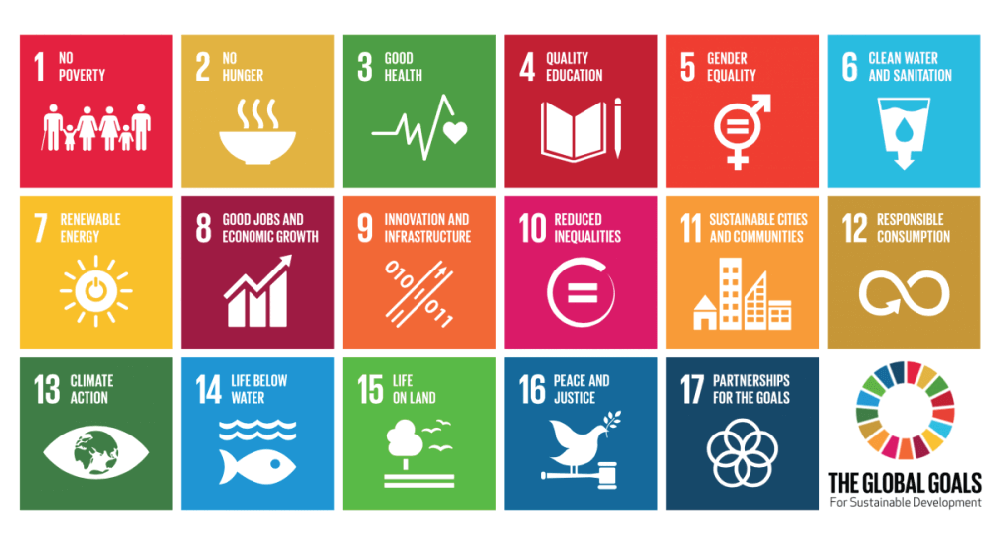Sustainable infrastructure plays a crucial role in addressing the pressing challenges, particularly mitigating climate change and promoting the sustainable development of resilient cities and communities.
Sustainable infrastructure goes beyond green spaces. By integrating circularity practices into the design, construction, and operation of cities, we can minimize environmental impacts, reduce risks, greenhouse gas emissions, and conserve natural resources.
What Is Sustainable Infrastructure?
Sustainable infrastructure refers to the planning, design, construction, and operation of physical structures and systems that maximize climate mitigation and adaptation, promote social equity, and support economic development over the long term both in developed and developing countries.
It involves integrating principles of sustainability into the entire lifecycle of infrastructure projects, such as resource-efficient buildings, water infrastructure, flood protection, sustainable construction materials, shared transportation, water efficiency, and proper waste management. Emerging markets and emerging economies are prioritizing quality infrastructure investment through government funding, private capital, and key stakeholders to encourage a low carbon transition and the achievement of sustainable development goals.
Sustainable infrastructure enables us to adapt to the changing climate by designing and constructing resilient systems capable of withstanding the challenges posed by the climate crisis, extreme weather events and rising sea levels.
We can pave the way for a more sustainable infrastructure and resilient future by incorporating six key elements into our infrastructure projects. Let’s explore each element and how they contribute to sustainable infrastructure development.
6 Key Elements for Sustainable Infrastructure Development
1. Sustainable Materials
Sustainable infrastructure prioritizes the use of climate-positive materials. By utilizing recycled or renewable materials, such as UBQ™, infrastructure projects can contribute to circularity by reusing materials that were destined to landfills, incinerators, and unmanaged dumps. Incorporating sustainable materials throughout the construction process also reduces the carbon footprint related to material production, conserves natural resources used to make new materials, and reduces reliance on fossil fuels.
2. Energy Efficiency
Buildings are responsible for 40% of global energy consumption and 33% of GHG emissions, making it a critical aspect of infrastructure systems. By integrating advanced technologies, practices, and materials, infrastructure planning can significantly reduce consumption and associated GHG emissions. Efficient lighting, smart grids technology, and efficient HVAC systems are just a few examples of how infrastructure can maximize efficiency while minimizing operational costs.
3. Resilience to Climate Change
The rise in global temperatures has already caused sea levels to rise and an increased number of extreme weather events such as droughts, fires, storms and floods around the world. Climate change poses substantial risks to cities, infrastructure, land use, rural and urban life.
To ensure climate resilience and minimize disruptions, infrastructure longevity must be designed and built to withstand and adapt to changing weather conditions, while protecting the environment in the process. Strategies and tools such as incorporating flood management systems and integrating green infrastructure into cities enhance resilience against extreme weather events, sea-level rise, and temperature fluctuations.
4. Optimal Resource Management
Infrastructure planning prioritizes the efficient use and conservation of natural resources. Responsible waste management, and the use of responsibly sourced materials helps conserve finite resources like water and reduce reliance on resource-depleting materials such as oil-based plastics and cement. By reusing materials and designing for circularity, we can maximize resource recovery, conservation and promote resource reuse.
Hybrid infrastructure, combining traditional engineered systems with natural infrastructure such as green spaces, wetlands, and permeable surfaces, supports innovation and closes the infrastructure gap between the existing infrastructure and the new infrastructure needed for a positive impact where we live in harmony with the environment.
5. Sustainable Infrastructure Investment and Social Inclusivity
Sustainable infrastructure investments aim to benefit all members of society, including marginalized communities who have been shown to experience the greater impacts of climate change. When it comes to sustainable infrastructure, social inclusivity considers accessibility, affordability, and community engagement in the planning, design, and implementation phases.
An infrastructure project must address the needs of diverse populations in order to be sustainable. By addressing the diverse needs of marginalized communities and ensuring equal access to resources and opportunities, social inclusivity can help advance climate goals by reducing inequalities, fostering social cohesion, promoting economic development, and supporting environmental sustainability.
6. Long-Term Planning
Considering future needs and challenges allows for the integration of environmental, social, and economic factors into infrastructure design and implementation. Infrastructure developers and investors can identify the most sustainable design, construction materials, and maintenance practices by considering the long-term impacts of various areas in projects, from inception to decommissioning.
Life cycle assessments help support long-term planning by identifying the climate impacts of infrastructure projects over their entire life cycle. An LCA considers all stages, from raw material extraction and manufacturing to use, maintenance, and end-of-life.
Will the proper tools and long-term priorities, decision-makers are able to that align with sustainability goals, getting closer to a net zero future, advancing resilience to climate change and optimizing resource efficiency. By anticipating future trends, such as population growth or technological advancements, planners can design infrastructure that accommodates these changes, minimizing the need for costly retrofits or expansions later on.
How UBQ Supports Sustainable Infrastructure
As the demand for resilient infrastructure continues to grow, innovative materials play a vital role in achieving systemic change and sustainable development goals. UBQ™ is a novel material that has gained recognition for its environmental benefits and ability to support sustainable infrastructure development.
UBQ’s Climate-Positive Material
UBQ Materials converts unsorted household waste, including all organics and unrecyclables, into a bio-based thermoplastic called UBQ™. This climate-positive material diverts waste from landfills and incinerators, prevents CO2eq emissions and preserves natural resources.
UBQ™ stands out as a sustainable alternative to traditional materials such as oil-based resins, cement and wood. It offers a broad range of applications and versatility, making it suitable for diverse infrastructure assets. What sets UBQ™ apart is its ability to upcycle mixed waste that was otherwise considered unrecyclable, while providing a lower carbon footprint in final applications. Infrastructure projects can easily reduce the environmental impact and promote circular economy principles with a simple material swap.
UBQ’s Low-Energy Conversion Process
As previously mentioned in this article, this is a crucial consideration in sustainable infrastructure development. UBQ™ demonstrates its commitment to energy conservation not only through the final application but also in the manufacturing process. UBQ uses only a fraction of the energy required to produce conventional plastics, contributing to the overall efficiency of infrastructure projects.
UBQ Offers a Resilient Built Environment
Creating resilient infrastructure is imperative to address the challenges of climate change. UBQ™ plays a significant role in advancing a healthier and more resilient built environment by diverting waste, preventing harmful emissions and minimizing environmental degradation. This not only enhances the quality infrastructure and longevity of projects but also contributes to the well-being of surrounding communities.
In addition, UBQ Materials embraces the principles of the circular economy, where materials are kept in a continuous loop of use and reuse, maximizing resource efficiency.
UBQ Conserves Natural Resources
UBQ™ is a remarkable example of how waste can be transformed into a valuable resource. By utilizing waste streams and discarded materials, such as organic and mixed plastics, UBQ™ prevents the production of resource-depleting raw materials. As a sustainable plastic substitute, UBQ™ reduces reliance on fossil fuels, preventing greenhouse gas emissions caused by the extraction of crude-oil from the ground.
UBQ Engages and Involves Local Communities
Working closely with local communities, UBQ™ is localizing waste-to-material processes, aiming to build new facilities around the world. UBQ™ emphasizes long-term planning, incorporating sustainability goals throughout the company’s goals, process and partnerships.
UBQ™ stands as a testament to how sustainable materials and strategic partnerships can support infrastructure development and surrounding communities. As the demand and investment for sustainable and natural infrastructure grows, UBQ™ exemplifies the potential for innovative materials to drive positive change and foster low-carbon building.


